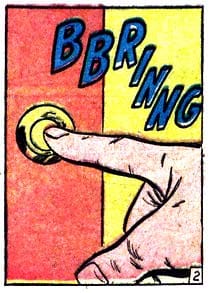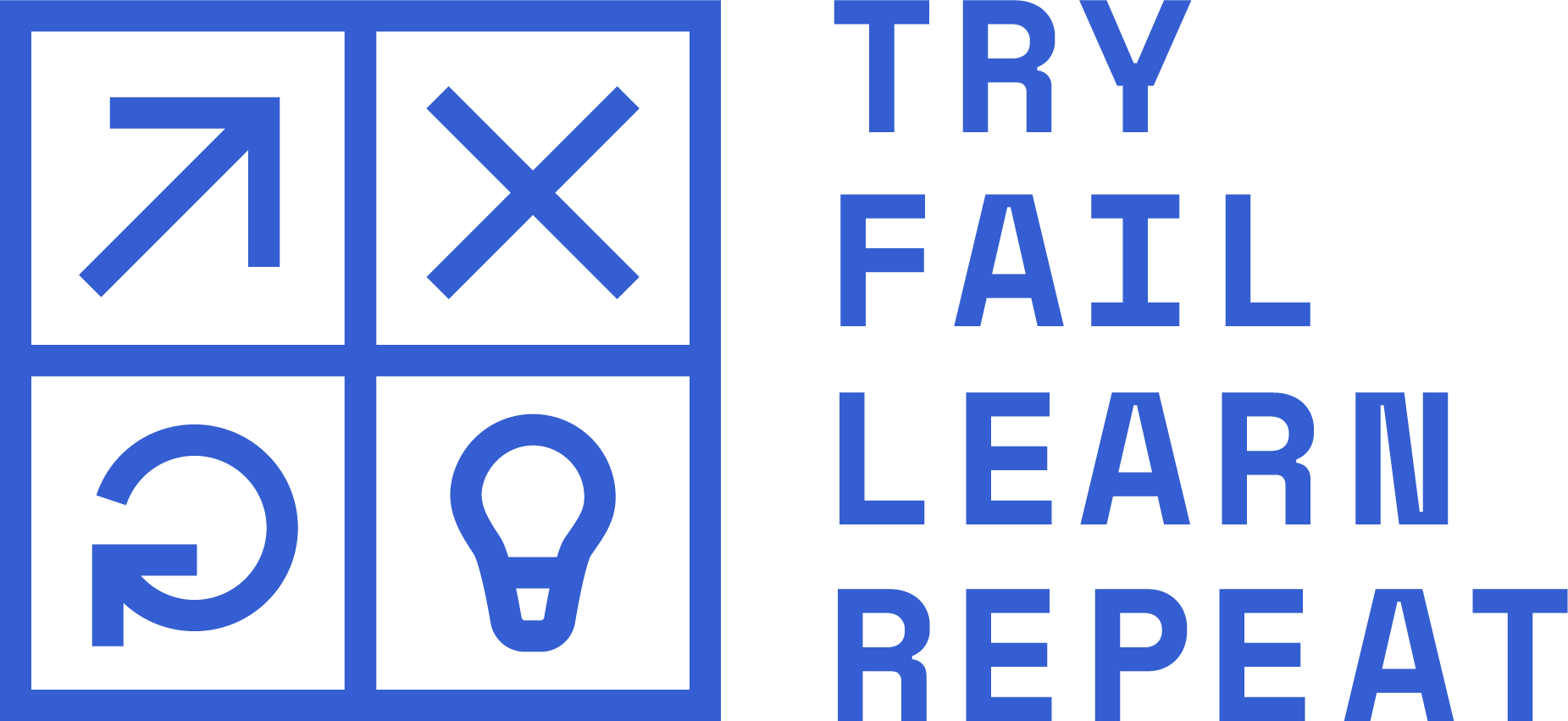The Pitch Deck - Your First Appearance on the VC’s Radar

Investor material #2: The Pitch Deck is the first thing most investors see of your company. Let me point out right away: With beautiful slides alone you’re not going to win anyone, it will only cost only time and effort when you have great slides but nothing underneath, so feel free to read the first part of the series again ;-) Let me compare it with your clothing: The outerwear is just as good the underwear underneath, and even your nice underwear won’t be of value if the naked body of your company is not fit for doing incredible things. So, when you prepare your beatiful pitch deck be aware that eventually, investors will strip you naked anyways.
A game changer in my effort to build pitch deck after pitch deck was the eBook
"Pitching Hacks: How to Pitch to Investors" by Venture Hacks. With a simple Google search for "Pitching Hacks pdf" everyone could find it and download it for free anywhere on the web. It’s a quick read, within a few hours you’re done reading, and by now you can even officially download it for free. My tips here are based on the tips in this book, but since the book A) focuses mostly on pre-seed stage companies and B) is thought as advice for pitching to US investors (who apparently are satisfied with less material than German investors), I adapted my advice to cover pre-seed until series A pitch decks as well as adapting it to the more thorough requirements of German investors.
So, what makes a good pitch deck?
Here is an example pitch deck containing the slides I would recommend you to consider. It is a full-blown deck, meaning not all slides might be relevant for you if you are raising from business angels or a seed round (also see section “Which slides do you need in which phase?”).
The deck is not beautifully designed, by any means. It was not intended to be, besides that I didn’t have the time to build a deck you could send out to investors right away, I wanted to reduce the example deck to the essential message of each slide, the exemplary content and to suggest a rough layout you can adapt, or not.
Slide 1: Logo & Investor tagline. “NewCorp. The Ultimate AI Assistant for Everything.” The tagline should be aggressive, buzzwordy, easy to grasp. No one has to understand the details and what it's all about at this stage. It just needs to create the feeling "Wow, that's something great".
Slide 2: Executive Summary. A summary of vision, product & market, sales and pipeline. Also this slide can have another focus, e.g. in case you have a deep tech startup: Vision, product, technical background, sales. Relevant only for Series A and later rounds, since only then you’ll probably have so many slides that a summary makes any sense.
Watch out to keep the slide maintainable! The figures in the executive summary might change from month to month, and maybe some of the figures may be appearing again on later slides, so you do not want to show inconsistencies. Therefore: It is best to link numbers to the original data, see chapter Excursus 2: Formalities, Tips & Tricks.
Slide 3: The problem. "Per order, an e-commerce shop loes 5% margin on processing. For an average basket size of €X and a sales of Y units, that's €Z per year” [use example numbers that illustrate an insanely large value, illustrating the problem of your target customers]. As a background image, choose something that emotionally underlines this problem. Example: the online retailer desperately burying his head in his hands.
Slide 4: The Solution. This is your kick-ass slide. In this slide, you introduce, showcase and explain your product and how it solves the problem. Pictures: Product (screenshots, etc.) and happy users. In case the product doesn’t exist yet, show your idea of the product: Mock-ups, design studies, and key R&D results (e.g. for Biotech startups) should be well prepared and presented in a comprehensive way. As a guideline, try to design this slide so it could be used in every context, i.e. in other presentations to customers, partners or even to explain your solution to your family members.
Slide 5: Technical Background / Vision, USP: What stands out about your product, what is the technology that promises an even unfair advantage over your competitors? What is the "special sauce", what makes your product and/or your going-to-market strategy unique? In my opinion, there is no good standard template for this slide - sometimes you have to split this slide into two slides, e.g. if you want to keep the current unique selling points separately from a future, technical or strategic positioning you envision. But be aware that you should keep the content as concise as possible and avoid too many technical details. As a rule of thumb, investors are not overly tech-savvy.
Slide 6: Market and Market Potential. In principle, I think it makes sense to segment your market into the current, addressable market and the market potential. The market potential itself can also be divided into different levels. Geographical (DACH region, US etc.) or industry segments. In addition to some general market figures, this slide should also contain an indication of the going-to-market strategy: In which segment did you already achieve product-market fit, which segment should be contacted first or next? What developments need to happen in order to exploit the full market potential?
Slide 7: Traction! Regardless of whether or not an investor is already hyped on your idea at this point, he will expect some kind of external validation in this slide. In case the investor is not convinced yet, this slide is the last chance to change his mind. If you not convince him here, he will not twitch at all, he will certainly ditch your pitch. What do I mean by external validation? The traction in the market, a proof that the problem is real, that the product is a real solution and that the market is really, really there. And the validation needs to be given by individuals or organizations outside of the founder team - the least personal connection to the founders, the better. Of course, the best thing here is to present user numbers, customer numbers and some hand-picked individuals amongst your users or customers and their testimonials.
For pre-revenue startups it is even more essential to present a credible validation, e.g. potential customers, potential partners - whoever. Especially in the case of pre-revenue start-ups, it is difficult to generalize here, so just take your time and think hard and honest about: "Who can represent my idea with full conviction and is willing to openly discuss it with an investor?". The reason behind this is that once the investor is through with the pitch deck still likes your company, one of the next steps will be that he wants references he can talk to personally.
The effort for this slide is not to be underestimated. The goal here is to represent the individuals with a photo, and their testimonial, and the logo of the organization they represent, if applicable. It is definitely a challenge to persuade people to give testimonials - especially if there is no product yet - it costs time and you have to overcome your own fear of being rejected when asking "Hey, we have this idea ... blabla ... we need references ... blabla ... you can give a testimonial .... Oh, and can we print that out word for word and could you send us a picture of you, so that we could include it in our investor presentation? ". Of course this fear is getting less severe once the product is already in the market and you have loyal customers. But also then, what might loyal customers think of your company if you ask for a testimonial? Does the customer think the company is running out of money? Is the customer really as satisfied as you think? After all, you had no direct contact for a few months ...
There are founders, for whom this step is no big deal at all, for example if you already have a lot of experience in direct sales and you know to deal with the experience of being rejected. But for many other founders - I think of myself and many other founders with a technical or scientific background, this fear of being rejected can really be an issue.
In my experience however, overcoming this fear is always rewarded. Always. And here is why:
- If the people you ask for a testimonial give critical feedback, this is usually extremely valid feedback. Taking this feedback seriously and listening to people is the best way to improve your idea and product, but also your marketing and sales pitch.
- Even if someone expresses strong criticism that does not seem justified to you - maybe the person does not fully understand the idea, has no idea about the technology behind it, etc. - this is an opportunity to practice to control your emotions and to turn the conversation to your advantage: There is no sense in arguing about implementation problems, the technology and trying to enforce your view of things. Much more it is the opportunity to make your conversation partner feel that he is heard, and even to give him the feeling that he is right! It is the opportunity to build a relationship - and on this basis, you can always come back later to a critic and launch another assault to convince him of your solution.
- If a person willing to give a testimonial, your trophy is not the testimonial alone. You've won someone who can also be asked for help later on, who will continue to provide feedback, might be willing to be cited in a PR message and so on. You’ve just built a "champion".
Conclusion: This slide is about validation and sales skills: Can these founders build a relationship with the customer? And in case of a pre-revenue startup that still builds on the product and for which this slide is certainly the hardest part, I as an investor want to be impressed by founders who manage to win fans for a non-finished product!
Slide 8: Marketing & Sales. This slide shows how you get leads, your pricing model, and how your sales process works. The content of this slide can be very diverse, but always, there is going to be some kind of pricing table. In general, the slide should communicate who has to pay which price and how you convince your leads to accept the prices. In my experience, there is always the question where marketing stops and sales begins. I don’t know if there is an official textbook explanation, but I usually draw the line where the lead is confronted with the pricing. Up to that point, you just want to attract people with your solution, to your product (“upstream” of pricing). The people or organizations you reach with your proposition are leads. As soon as you communicate: This is what you need to pay for using our solution, you start selling (“downstream” of the pricing). Therefore I like to place the pricing table at the middle of the slide, and show something that indicates how you get leads above the pricing table (text, logos of marketing tools, whatever). In case leads are still interested in your offering after reviewing the pricing, they become opportunities. Therefore, you place some information on how you convert these opportunities below the pricing table, e.g. you write something about how many follow-ups you do via phone, how many mails you send, how much time it takes.
Slide 9: Sales Pipeline. For early stage startups, this slide can be combined with Slide 8. Since this slide should serve both as a procedural model of the stages in which your distribution model works and as well should contain a snapshot of the current sales pipeline, the most popular representation here is the sales funnel. The sales funnel has different stages opportunities usually pass before they become a customer. For example, these stages could be "meeting / webinar" (means: personal contact has taken place), "free trial" (means: opportunities are just trying out product), "contracting" (means: Contract negotiations are currently taking place) and "Won" (means: you convinced someone to pay for your solution). Startups which already have significant sales should show how voluminous the current pipeline is in total, and how much volume is in every stage. Then, of course, it makes sense to also state how many organizations in detail, such as the average probability of conversion per level, and how long the entire sales cycle is (days or months from first stage to "won"). In addition, you can also show some details of the post-acquisition journey, how high the retention is, the average customer lifetime value (CLV) etc.
Due to the many data to maintain in this slide, make sure to have a good updating process in place, also see Excursus 2: Formalities, Tips & Tricks.
Slide 10: Competitive landscape. If you follow the traditional textbook rules for writing a business plan it may be correct to cover competition within the chapter "market", and for the pitch deck it might make sense to place your competitor slide(s) just after the “market” slide. However in my opinion I believe the story is just much more straight forward when you talk about your success first and then talk about competition: "This is the problem and we have the solution. It is a great market and we can show traction. Here is how we achieve our successes (Marketing & Sales).” and only after that say “Of course there are competitors, but of course we’re better because of this and that...". For me, the story just loses some of its power when you discuss competition before your own successes. It’s probably just a matter of taste and my advice on how to cover competition, how to design the slides etc. would not change by a different order of slides.
The Competitive Landscape slide is designed to give an overview of competitors and similar, overlapping solutions, while the Core Competitors slide serves to provide a detailed comparison. Depending on how much competition you have, maybe one or the other slide is enough. If there aren’t any similar competitors, the "Landscape" slide is sufficient, whereas if there are only a few but similar competitors the "Core competitors" slide would be sufficient.
The competitive landscape analysis consists of a diagram on which the axes represent specific product features, market segments, and so on. For example your X-axis might represent the size of targeted companies (startups, SME, Enterprise), your Y axis can represent the value proposition (Affordable, easy to use, integration). Then you simply place the solutions that are already on the market on the area of the diagram, according to the best possible estimation. Although the Competitive Landscape Analysis comes in a diagram, this analysis is rarely based on a quantitative analysis. This makes me a big fan of this analysis, not because I don’t like quantitative analysis, but because it’s a very efficient way to get a pretty good overview. For internal use, it may even make sense to evaluate multiple combinations, i.e. to create multiple diagrams with different axes. For the pitch deck I would only select a diagram that contains the most important statement about your own positioning in the market.
Slide 11: Core competitors: If you have presented a comprehensive Competitive Landscape Analysis, it is time to look at the competitors closest to you on this landscape: your core competitors. The design of this slide is straightforward: A table, for each of your 2-4 competitors a row, the bottom row reserved for the own product / company. Choose product features of the products or characteristics of the company (eg estimated sales, most important reference customer, etc.) per column, and then place check marks (✓) and exes (✗). Every investor knows that this view is still very superficial, so your target should be to give a very good overview, but not more. I sometimes see check marks in in parentheses in the row for the own company, and this being explained by "(✓) = currently being developed". My opinion: I think for pre-seed startups that’s OK. If a maximum of one or two check marks are in parentheses and you can explain why this feature is important later on, no one will blame you for that.
Slide 12: Milestones. In timeline format, what's up for the next 6 to 12 months? Which features should be developed, which new marketing channels should be opened, which revenue should be achieved, which key hires should be made? Of course you shouldn’t include all the details of your roadmap, just choose the most important ones which define the company’s success. In my experience, a timeline that is too precise timetable brings more harm than benefits, my advice here is to break it down in quarters. That means the statements are generally "sometime in quarter X we want to achieve Y" - In follow-up conversations you will always have the chance to be more precise. A timeline that is too exact is too complex to maintain and more importantly, milestones are an commitment. Especially in an early stage startup, so many things change so fast, that it would be nearly impossible to keep up with the Milestone Slide.
Tip for the layout: At least in Google Slides there are great templates for Milestone Slides, which you can then easily customize (Feb 2018: Insert> Diagram> Timeline). I'm sure there is something similar in PPT too.
Tip for update: If you are already in the middle or end of a quarter, simply label the an achieved milestones as "achieved" - no matter if this was a planned or unplanned "Achievement". This saves you the effort of having to update your plan at any moment in addition to that achieved milestones always make a pretty good impression…
Slide 13: P/L and Key Metrics - History and Forecast. After the short-term 6-12 month, this is a review of how the company has developed in the past and how it will develop in the next 5-7 years in terms of revenue (per key sales channel), costs and financing. Design: table, if necessary with 1-2 charts. And yes, you have read correctly: Cover 5-7 years. The reason is that on average, investors have a holding period of 5-7 years, meaning they want to stay invested in your company for that time until they sell. And no matter if it makes sense to you or not, if you want to raise money from VCs, your company should fit into the investor’s framework, and the best fit is that it has the potential to become a unicorn. Of course the truth is that trying to forecast the next 2-3 years is like a glance into the crystal ball, most probably your forecast will change in some more or less important way after six months already. The funny part is that investors know this as well, especially when they’re dealing with early-stage startups. Thus no one expects you to model the next 5-7 years in full detail. I’ll write more about that in the next part of the series, just to quickly give you my opinion: Personally I do not like to inflate numbers, and my rule is to keep the forecast for the coming year extremely realistic, even conservative. But for everything else, I believe that it is important to commit to most optimistic case, even if it feels like a crazy vision in the present. After all, you want to show others and remind yourself of what the possibilities are.
If you have one, your history is also important: What was the revenue in recent years? How did the most important metrics develop?
Another important feature of this slide is that it is 100% transparent. A VC must be able to calculate very simply: ARR (annual recurring revenue) of € 1.25 million and an avg. ACV (average annual customer value) of 25 T €... Yes, for this they need 50 customers.
Slide 14: Management Team. One of the most important slides in the entire deck. The layout is pretty standard and straightforward, so here what it should contain:
- Photos of the founders and possibly the rest of the management team (MT) - as a rule of thumb, don’t present more than 2 to 4 people here
- What role do the founders and managers have (Managing Director, CEO, COO ...) and what is their main responsibilities: Product, Technology, Marketing, Sales, Investor Relations, Finance etc. Of course in startups, most of you will have several responsibilities at once.
- What background and which relevant experience and education do your MT members have - "ran e-commerce agency for 2y", "3y strategy consultant at X"," PhD in Y "
This slide needs to spark confidence and sympathy for the management team: "We are extremely capable individuals and a good team, we complement each other, can perform well and are open-minded". The last point in particular can not really be portrayed in text or image (please don’t write "open for new ideas", "open minded" or something), but the whole slide should convey that you’re not asking VCs to invest in arrogant and slick people with individual agendas, but rather in what you hopefully are, and that’s a great team of great, humble personalities. A great team is happy to ask for and take advice, and overall works well together with the investors.
Some others have advised to position this slide as early as possible in the deck, sometimes even as the first slide. You can definitely consider that, especially for startups in an early stage, where most of or even all the value lies within the team. In Germany, I've often heard the feedback “I first want to learn what the company is about" and therefore, at least for the time being, my rule of thumb would be to put the problem and the solution slides first.
Slide 15: Investors & Board. If you already have investors and/or a board, show your main investors and business angels (including a photo of the business angel or investment manager) and the Advisory Board - in most cases, there is an overlap, the lead investor is also the Chairman of the board, etc. As with the team slide this slide is supposed to build a personal relationship. When new investors look at the deck and consider investing, the current shareholders as well as the board are are just as much the people to deal with as the founders. In addition, VCs know each other, and of course it helps if you can show individuals or investors with a good reputation, or even someone who is part of the investor’s personal network.
Pre-seed startups can also accommodate a (Scientific) Advisory Board on this slide. People who are successful entrepreneurs already help a lot, even if the company is in another field. Then VCs know that the founders have access to good advice in entrepreneurship (strategy, leadership, psychology, etc.)
Slide 16: Capitalization Table. In early stage companies, you can list the founders and other shareholders and their individual percentages of ownership of the company. As soon as you have a more complex cap table, the best to do is to distinguish individual categories of shareholders only: founder and management team, team members, business angels, investors. At this stage, there is probably already an employee ownership program (usually a Virtual Employee Stock Option Program, VESOP). I am a big fan of showing the total ownership instead of the common shares, or in my words, how much is someone involved by some kind of share.
I would not go into much detail, a simple table showing percentages is enough for this slide.
Slide 17: M & A, VC Transactions & Partnerships. Especially for investors who are not familiar with your market, it is certainly interesting to learn about the dynamics in terms of investments, partnerships, acquisitions, exits etc. in your space. Has a competitor completed a major round of financing? Which corporates are regularly acquiring startups? Which startup exited to whom? Often, partnerships are also very interesting, especially in the life science and pharmaceutical sectors since this is often the prelude to out-licensing or acquisition.
Design: tabular form (events chronologically from top to bottom) or as a timeline.
Slide 18: Exit Opportunities. This is certainly a controversial slide: You build a company to change the world, to change the status quo, to become the world’s market leader of X, to go public - and not to sell out at the first opportunity. In my opinion, this aggressive attitude should also be cultivated and nurtured because it only has positive effects - your own motivation, employees, strategy. From an investor's point of view, this attitude is also great (see slide 12), but of course investors want to see who you could sell the company to - after all, that's the business model of VCs: buy shares of a company at an early stage and sell later with a huge return.
Therefore, this slide should include companies that may eventually be interested in buying your company. And it should contain what about your company could be attractive to these potential buyers, such as your technology, access to a new customer segment, synergies, etc.
Slide 19: Contact. This slide just your contact information or the contact details of the person in your company, who is responsible for investor relations. At some point, investors want to get to know the whole team, but it is important that there is a dedicated contact person for the fundraising topic. In early stages, this contact person is usually the founder-CEO, the person who had the initial idea and has the largest stakes in in the foundation (whether that is reflected in shares or not).
Which slides do you need in which phase?
| Pre-Seed | Seed | Series A | |
| 1: Logo & Investor tagline | yes | yes | yes |
| 2: Executive Summary | no | optional | yes |
| 3: The Problem | yes | yes | yes |
| 4: The Solution | yes | yes | yes |
| 5: Tech, Vision, USP | yes | yes | yes |
| 6: market and market potential | yes | yes | yes |
| 7: Traction! | yes | yes | yes |
| 8: Marketing & Sales | yes | yes | yes |
| 9: Sales Pipeline | optional * | optional * | yes |
| 10: Competitor landscape ** | optional | optional | optional |
| 11: Core competitors ** | optional | optional | optional |
| 12: Milestones | yes | yes | yes |
| 13: P/L and KPIs | no *** | optional *** | yes |
| 14: Management Team | yes | yes | yes |
| 15: Investors & Board | no | optional | yes |
| 16: Capitalization Table | yes | yes | yes |
| 17: M & A, VCs, Partnerships | no | optional | yes |
| 18: Exit Opportunities | no | optional | yes |
| 19 : Contact | yes | yes | yes |
| Number of slides (+ optional slides) | 11 (+3) | 11 (+8) | 17 (+2) |
* Sales Pipeline: Depending on what you already have. Sometime it makes sense to combine this slide with "Marketing & Sales"
** Competitor landscape & Core competitors: One of both slides in any case, optionally both
*** P/L & KPIs: In pre-seed this can be dealt with in "Milestones", maybe even still when raising for a seed round.
Excursus 1: Pitching and Pitch deck
For me, pitching and the pitch deck are something completely different. When I pitch - meaning I present in front of people - my presentation contains only some of the slides that are in the pitch deck I usually send out to investors. I usually use some of the key slides from the pitch deck for presentation, and because I usually present them over and over again, I adept them a little for presentation purposes, meaning I focus even more on pictures and reduce the text content as much as possible. Sometimes the slides are slightly modified, simplified or summarized. An example for adapting slides for presentations is the "Team" slide. In the version I send out, every member of the management team is presented with a detailed text. In the version of the deck for presentation I just show photo and name, since I can present the details verbally. I definitely use the "problem", "solution", "market" slides regularly. However I believe I’ve never presented the data-heavy "P / L and key metrics" or "Cap Table" slide.
Of course, every pitch contains reusable elements, but it somehow happens that I prepare almost every pitch individually. How I prepare for pitch presentations I might describe in another post, for this post it's important once again that it is about the pitch deck you send out, not the pitch deck you present. The send-out version has priority for me, simply because you just need it much more often.
Excursus 2: Formalities, Tips & Tricks
Font sizes: According to the 10/20/30 rule for PowerPoint by Guy Kawasaki , a presentation (PPT) should contain a maximum of 10 slides, take a maximum of 20 minutes and contain no writing smaller than 30 points. This might apply to the pitch presentation (see above), but I’ve not found it practicable for the pitch deck you send out. Here's my rule of thumb (all Google Spreadsheet font sizes):
- Call-out lines: 32 (e.g. on "problem" slide)
- Regular titles: 24. Always as an action title, the title is not just a chapter heading ("Marketing & Sales") , but underlines the message: "Strong in Outbound Sales, Growing Inbound."
- Bullet points: 24.
- Text boxes, subheadings, etc.: 18.
- Regular text: 16
- text in tables, charts etc.: 12
Then a few more, short tips:
- Insert slide numbers: After the first contact and sending the Pitch Deck, you will usually have a longer phone call with the VC interested in your company. In this call, you will guide through the deck and it just helps a lot if you can refer to slide numbers.
- Backup Slides: Whenever you have a specific topic that does not fit the standard composition of the pitch deck, but might be interesting for a particular investor, you can still put such slides in a separate "Backup" section at the end.
- Adaptability / Maintainability: At least Google Slides makes it possible to copy and paste charts and tables into Google Slides and links it to the original data. If you have built up the corresponding spreadsheets dynamically and maintainable, you can, for example, update the data of the sales pipeline, the forecast etc. with a single click. You don’t have to worry about having to copy the data back and forth, formatting the copied data etc. The good thing is that you after you copy & paste from Google spreadsheets, you can customize the format (eg font size) in Google Slides, and once you update the data only the numbers change, but not the format.
Excursus 3: Slim Deck or Teaser Deck.
The "Slim Deck" or “Teaser Deck” is just a slimmed-down pitch deck. It is almost just a company presentation with only a few numbers (especially no corporate figures / KPIs), which can be sent without much concern. Often, the Slim Deck also provides a good basis for a pitch presentation - here you do not want to go deep into KPIs and the details of the financial plan, you just want to introduce the company.
So much for that, in the next part of the series it's all about the financial plan. Because as soon as you deliver beautiful pictures with the Pitch Deck, investors want to know what the numbers are about ...
An overview of the entire series:
Disclaimer: The list below is more of an overview of what the series might contain sometime ... most of the texts are currently in raw format or do not exist yet at all! Therefore the list might change at any time! If there is a subject on which I should definitely write about or a subject you’re interested in that is not appearing in this list at all, just leave me a comment!
Part 1: Get ready - An overview of what to expect from talking to investors.
Part 2: The Pitch Deck - how you present yourself to investors
Part 3: "Thanks for the pitch deck. Can you send your financial plan?" - Work in progress ;-)
Part 4: Market Analysis - Work in progress ;-)
Part 5: Competitor Analysis - Work in progress ;-)
part 6: Your Sales Dashboard - Work in progress ;-)
part 7: On the way to deal: The Cap Table - Work in progress ;-)
part 8: Deal or no deal - in any case, that was just the beginning - Work in progress ;-)
References
Image source: http://www.comicbookfx.com/result.php?tagexact=1&tags=doorbell: “BBRINNG”, Marvel, July 1962 "My Life, My Love!" Lettered by: Artie Simek Written by: unknown Pencilled by: Jack Kirby




